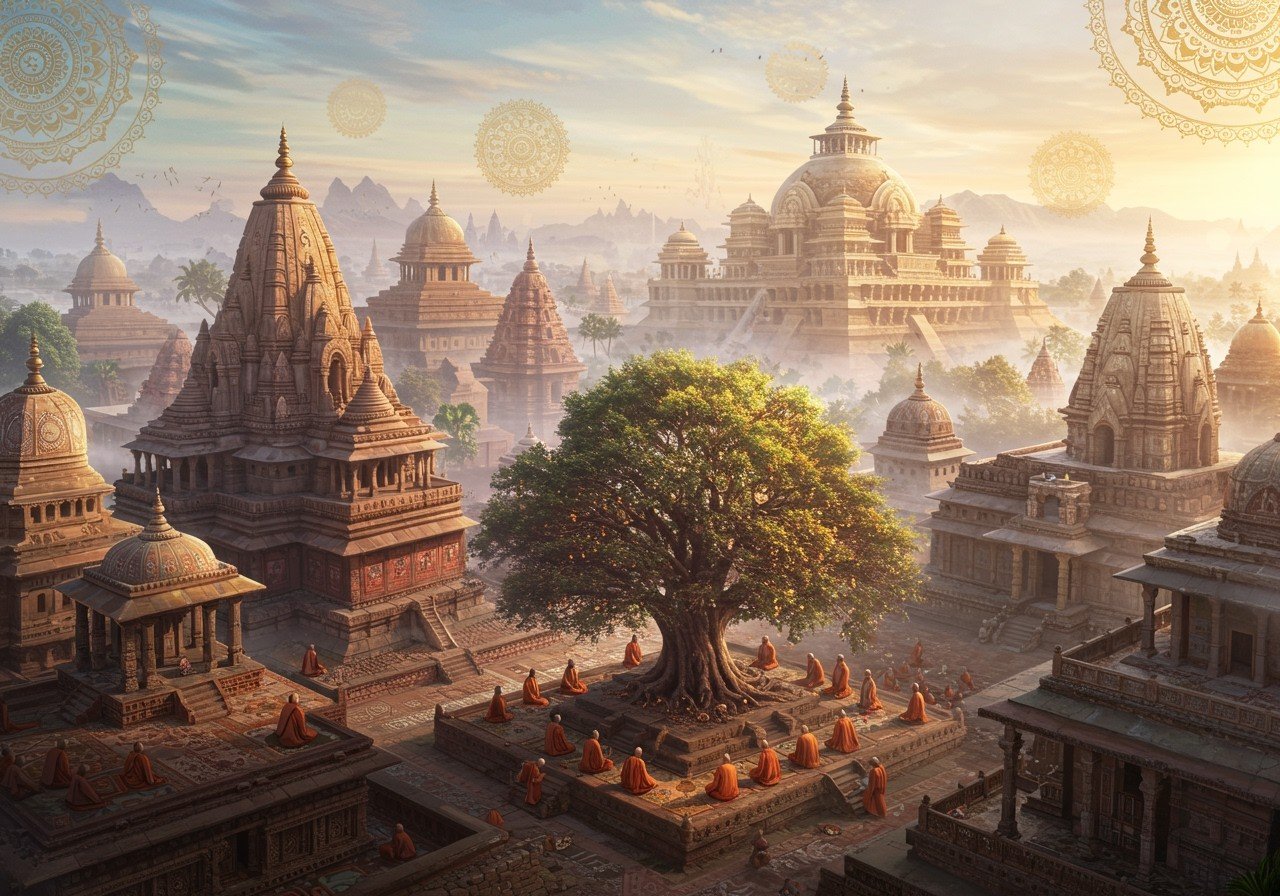The Shaishunaga Dynasty: Capitals and Religious Practices

The Shaishunaga dynasty, a pivotal period in ancient Indian history, left a significant mark through its capitals and religious practices. Emerging in 413 BCE, this dynasty played a crucial role in shaping the Magadha region. This article explores the capitals and religious practices of the Shaishunaga dynasty, providing insights into their historical importance and cultural influence.
Origins and Rise of the Shaishunaga Dynasty
Shishunaga founded the Shaishunaga dynasty in 413 BCE. He ascended to power following a public revolt against Nagadasaka, the last emperor of the Haryanka dynasty. Initially a minister in the Haryanka court, Shishunaga’s administrative acumen and leadership qualities enabled him to establish a new dynasty in Magadha. During the 5th century BCE, Magadha experienced considerable political and social transformations. Shishunaga’s reign witnessed the annexation of the Avanti Kingdom, expanding the Magadha Empire. His son, Kalashoka, carried forward his legacy, playing a vital role in the dynasty’s history.
Capitals of the Shaishunaga Dynasty
Rajgir served as the first capital of the Shaishunaga dynasty. This city held historical and cultural significance, linked to the preceding Haryanka dynasty. During Kalashoka’s rule, the capital shifted to Pataliputra (present-day Patna). Pataliputra’s strategic location facilitated trade and defense. The city’s urban design and architecture during this era were noteworthy. Archaeological discoveries offer glimpses into Pataliputra’s layout, infrastructure, and its role in trade and commerce. Explore ancient temples and their history on poojn.in.
Religious Practices of the Shaishunaga Dynasty
The Shaishunaga dynasty embraced both Brahmanism and Buddhism. Their patronage of Buddhist monasteries and stupas, such as those in the Barabar Caves, demonstrated their support for Buddhism. Kalashoka is renowned for hosting the second Buddhist council at Vaishali. Brahmanical rituals also held a prominent place in court life and society. Inscriptions and historical accounts illuminate the religious practices and festivals of this period. The dynasty’s support for both religions underscores their commitment to religious tolerance. Enhance your spiritual journey with authentic puja items from poojn.in.
Cultural and Societal Contributions
The Shaishunaga dynasty made notable contributions to literature, art, and architecture. They fostered educational institutions and centers of learning, influencing the social fabric and daily life in Magadha. Their policies promoted trade and economic growth. Cultural exchanges with neighboring regions thrived during their reign. Archaeological evidence provides insights into the lifestyles and customs of the people during this period. Discover a wide selection of cultural goods at poojn.in to connect with India’s rich heritage. Learn more about India’s cultural heritage.
Conclusion
The Shaishunaga dynasty represents a significant era in ancient Indian history. Through their capitals, Rajgir and Pataliputra, and their patronage of both Brahmanism and Buddhism, they shaped the cultural and religious landscape of Magadha. Their contributions to literature, art, architecture, trade, and education underscore their enduring legacy. The Shaishunaga dynasty’s history, blending tradition and progress, continues to evoke pride and admiration for our rich heritage. Understanding their story allows us to appreciate the depth of our cultural roots and the importance of preserving these traditions for future generations.
Frequently Asked Questions
Where was the Shaishunaga dynasty’s capital? The Shaishunaga dynasty initially had its capital in Rajgir, later moving it to Pataliputra (modern Patna, Bihar). This shift was likely influenced by Pataliputra’s strategic location on the Ganges River, beneficial for trade and defense. It also became a significant center for administration and culture.
What were the primary religions during the Shaishunaga dynasty? Both Brahmanism and Buddhism were prevalent during the Shaishunaga dynasty, demonstrating a degree of religious tolerance and coexistence. While Brahmanical traditions continued to hold influence, Buddhism flourished under royal patronage, marked by the construction of monasteries and stupas. The second Buddhist council, held in Vaishali during this period, further solidified Buddhism’s importance.
Who established the Shaishunaga dynasty? King Shishunaga, a former minister of the Haryanka dynasty, founded the Shaishunaga dynasty in 413 BCE after a popular uprising. His reign was marked by the expansion of the Magadhan empire, particularly with the conquest of Avanti. Explore more about dynasties and their architectural marvels.
Why was the capital moved from Rajgir to Pataliputra? While the exact reasons remain debated among historians, the move from Rajgir to Pataliputra likely stemmed from a combination of strategic, economic, and political factors. Pataliputra’s advantageous position on the Ganges River offered better control over trade routes and enhanced defense capabilities. Its central location within the expanding Magadhan empire may have also made it a more suitable administrative hub. Discover architectural wonders of ancient temples.
What is the significance of Pataliputra during the Shaishunaga dynasty? Pataliputra flourished as a major administrative, commercial, and cultural center under the Shaishunaga dynasty. Its strategic location fostered trade and economic growth, while royal patronage contributed to the development of art, architecture, and education. The city’s prominence during this period laid the foundation for its continued importance in later empires. Explore ancient temples and their rich history.


